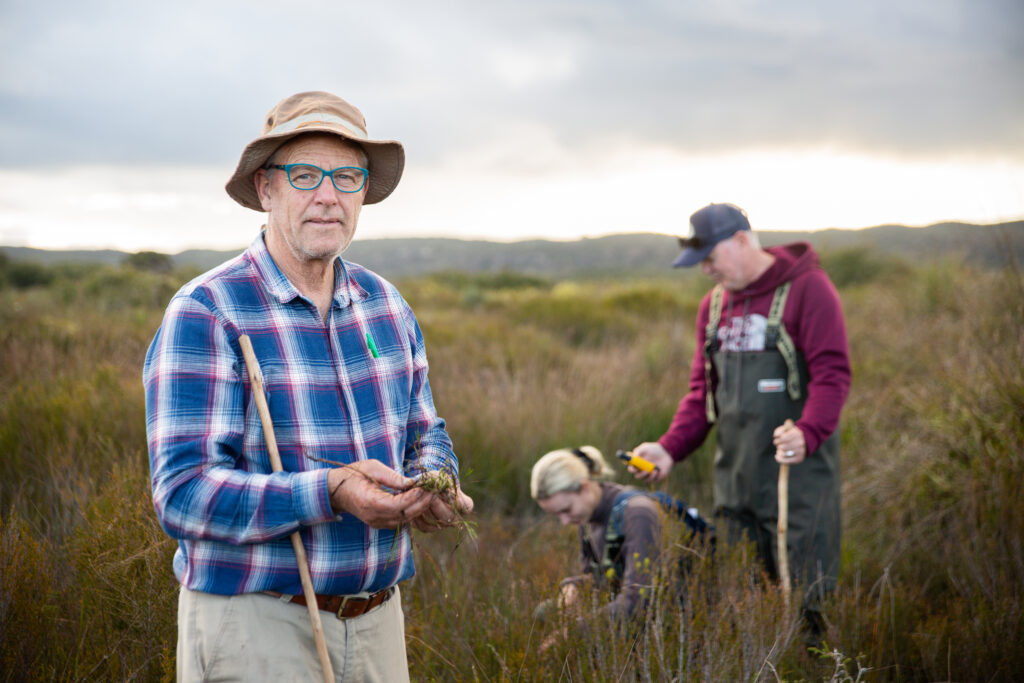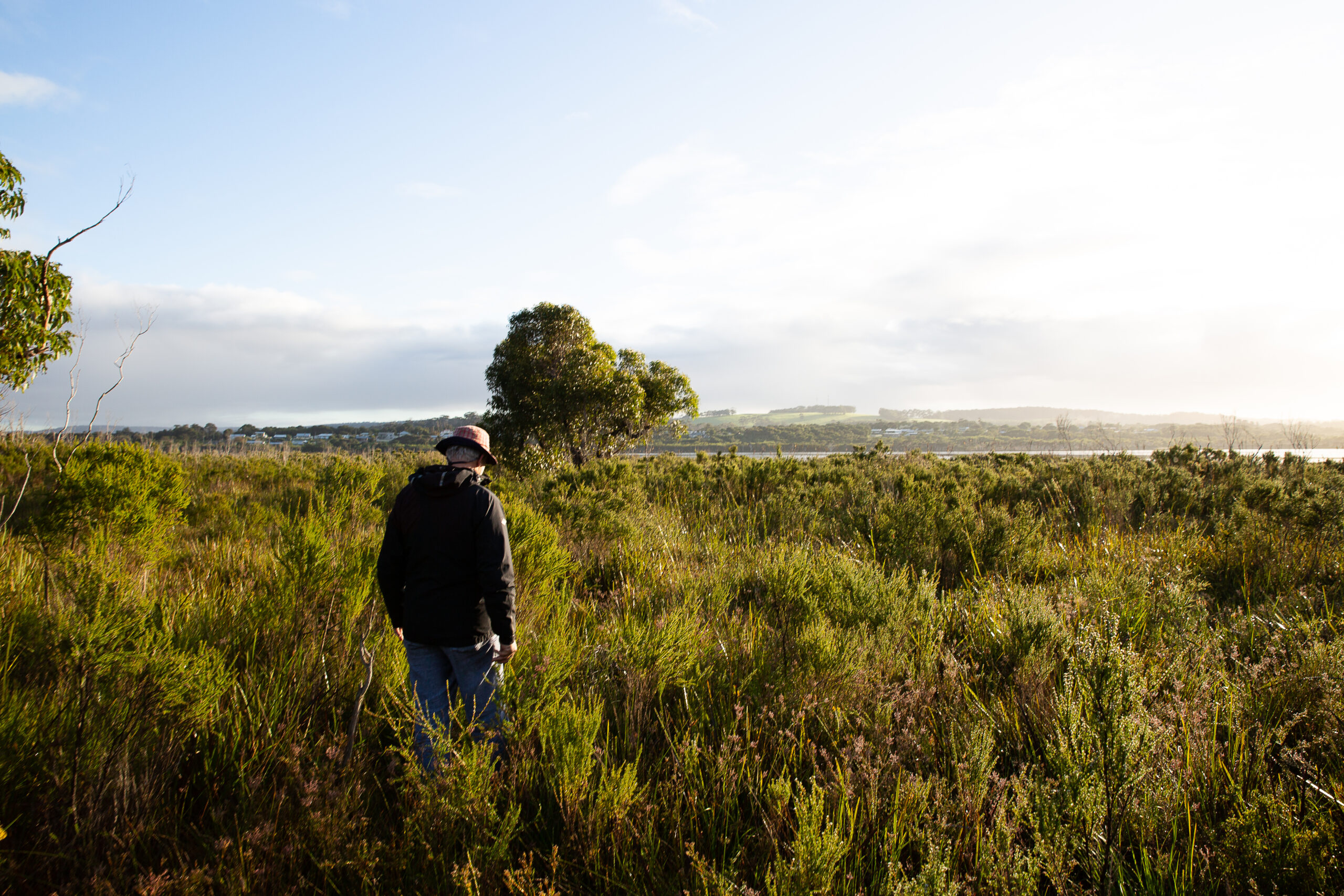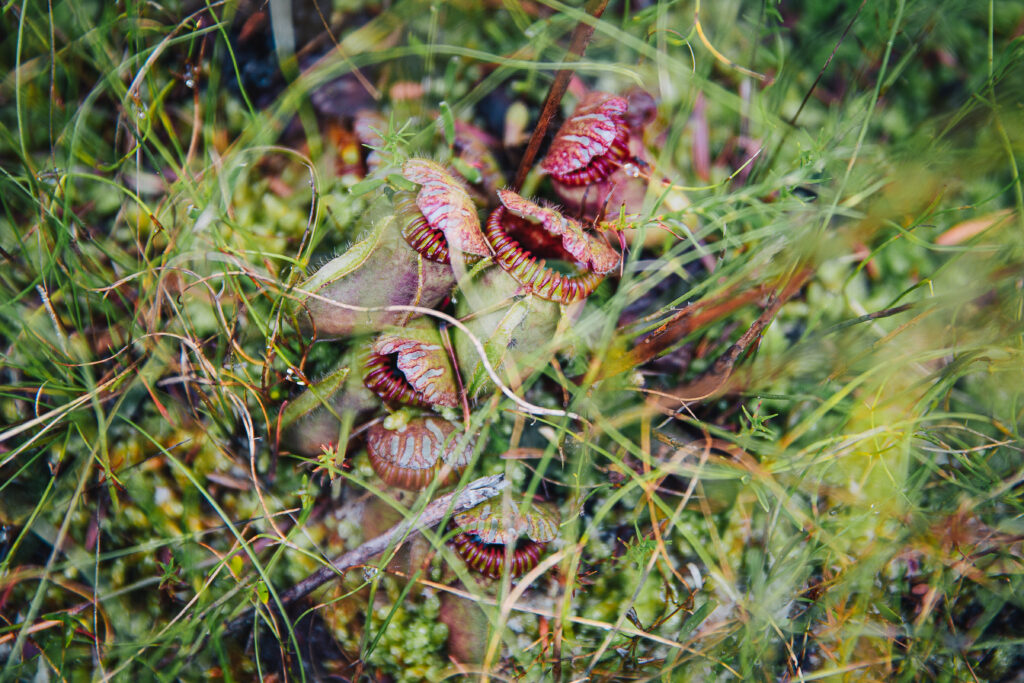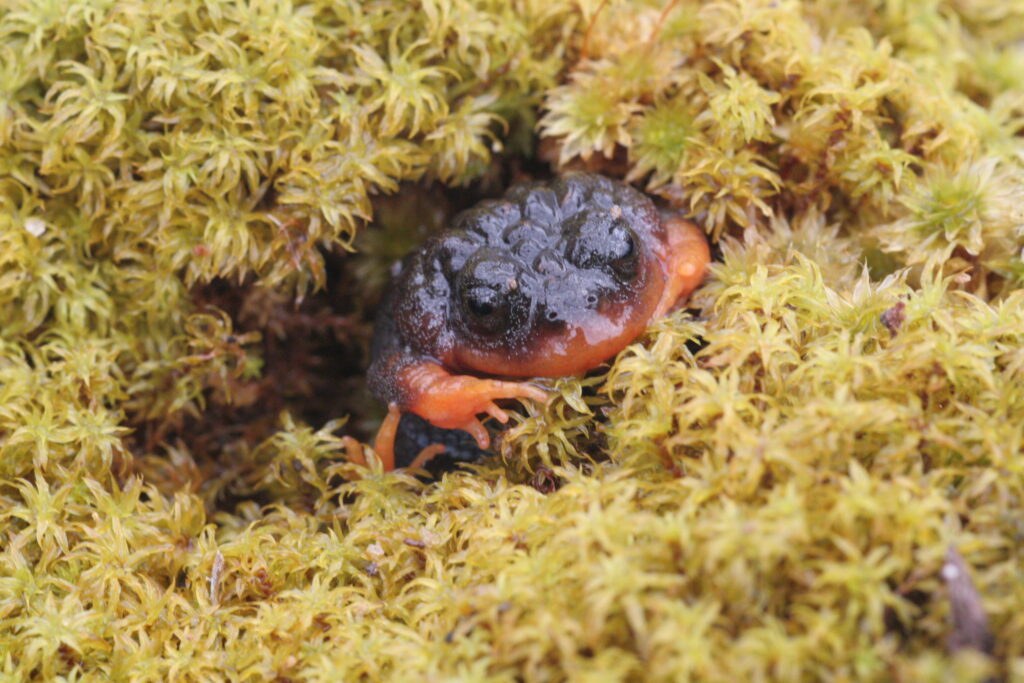Peatlands aren’t the most celebrated landscape. A slowly decomposing bog doesn’t have quite the same impact as WA’s towering forests or dramatic coastline.
Despite that, the Ian Potter Foundation recently donated $1.3 million to study peatlands in southwest WA.
Such a generous donation begs the question, why are peatlands important? And also, what the heck is a peatland?
meet the peat
Peatlands occur where soil is permanently saturated from seeping groundwater or springs. This slows down the decomposition process.

Empodisma peatland | Holly Winke
Over thousands of years, plant material forms layers of wet, organic soil. This makes them an enormous store of carbon.
Australia’s peatlands are critical habitat for rare native species. For example, the sunset frog and the Albany pitcher plant are endemic to the peatlands of the southwest.
They’re both listed as vulnerable by the International Union for Conservation of Nature (IUCN). In fact, they are the only living species from their taxonomic families.
under threat
The sunset frog and Albany pitcher plant are remnants from ancient Gondwanan lineages.
For over millennia, as southwest WA experienced long periods of aridity, the two species managed to survive in tiny wet pockets like peatlands.
“We call these little pockets wet refugia,” says Professor Pierre Horwitz, a wetland ecologist from Edith Cowan University.

"[They] persisted over millions of years and avoided the aridity which obliterated others."
But recently, these ecosystems have come under threat.
heating up
Peatlands are generally too wet to burn, but warmer temperatures and drier summers are drying out the peat in some areas. And dry peat is very flammable.
In the northern hemisphere, dried peat blocks have historically been burnt for fuel. The dense, carbon-rich peat burns hot for a long time.
So when massive underground stores of peat ignite, it’s a serious problem.
Once a store of peat is burning, it can smoulder for months, creating a challenge for firefighters. It also poses an ongoing risk of reigniting spot fires.
And all the while they burn, peatlands are releasing carbon back into the atmosphere.
As if this wasn’t enough, feral pigs enter areas of burnt vegetation and tear up the soil. This further dries out the peat and destroys critical habitat for threatened species.
the peat people
Little is known about how and where peatlands occur. This makes their management a difficult task.
UWA conservation biologist Nicki Mitchell says they are cryptic ecosystems.
“If you fly a drone or an aeroplane over the landscape, you can guess from the imagery where they should be,” says Nicki.
“But you will get it wrong a lot of the time.”

Peatlands can be difficult to spot | Holly Winkle
After damaging bushfires in 2019, a Walpole community group nominated the Empodisma peatlands of southwestern Australia as a threatened ecological community.
This caught Nicki’s attention and led to the formation of PEAT – Protecting Ecosystems and Addressing Threats in Southwestern Australia.
The five year PEAT project is a research collaboration between UWA, Edith Cowan University, the Walpole-Nornalup National Park Association, Aboriginal Elders, the WA Museum and the WA Government.
More than two dozen researchers make up the team. Their aim is to map the peatlands and document their geodiversity and biodiversity. This data is then used to work out how rapidly the systems accumulate new peat soils.
Their combined knowledge will inform peatland conservation management strategies.

The dedicated team protecting WA’s peatlands | Holly Winkle
diving into peat
First, the PEAT team needs to understand how peatlands function and the risks they face.
According to Pierre, the PEAT co-lead researcher, peatlands are particularly vulnerable to fire during dry periods.
“If we [manage] the land so that it can maintain the moisture, then it will self-regulate the intensity of the fire,” says Pierre.
He says the team will ask some fundamental but critical questions.
“What’s there? What’s important? What are the soil values? What are the plants and what are the animals?”
“Then we start to develop management strategies for these things,” says Pierre.

Nicki Mitchell and PEAT team members surveying the peatlands | Holly Winkle
The PEAT project starts with Traditional Owners and remains guided by Elders throughout.
Traditional knowledge is used by PEAT alongside modern scientific tools like aerial mapping, and data on hydrology, soil structure, plant biology and more. .
While it’s early days, the PEAT team hopes to shine a light on these unique and threatened ecosystems to conserve the biodiversity they support for future generations.











